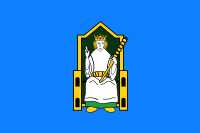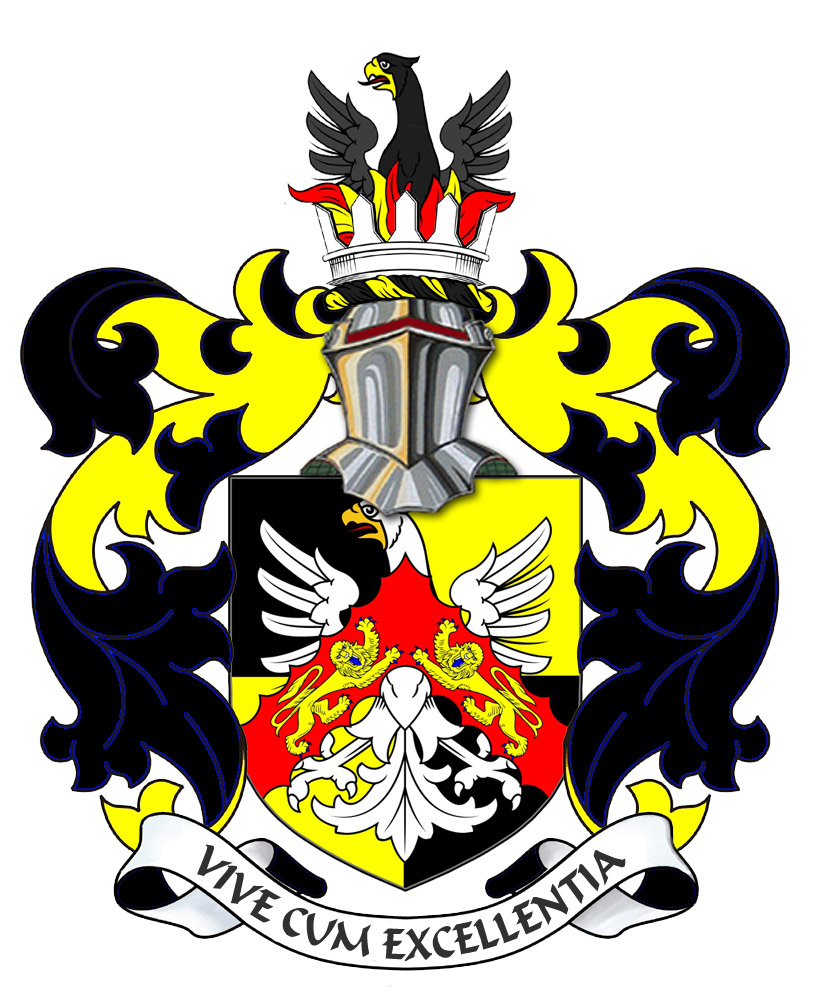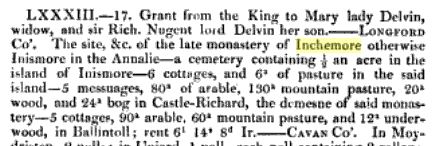Baron Longford Baron Annaly - Feudal Principality Seignory




Knightly Order of St. Columba or ColumcilleKnights of St Lioban of Inchmore IrelandOrd na Riddirí Naomh Colm Cille or Ord Ridire naomh Colm Cille
The Order of St. Columban is a monastic order founded by the Irish missionary
St. Columban (540–615): Saint Columba (also
known as Columcille ) on the Island of
Inchemore in County Longford Ireland.
The Sovereign Chancellor and Grand Prior is Commissioner George Mentz JD
MBA DSS, Seigneur of the Fief Blondel of Normandy and the Feudal Baron of Annaly and feudal Lord of
Inchmore Island.
Saint Columba's
monastic life is traditionally believed to have begun on Inchmore Island in Annaly (modern-day County
Longford) of which George Mentz acquired the feudal rights and honors to this island
from Lord Westmeath AKA/ Baron Delvin. According to local legend and some historical sources,
Inchmore Island was where Columba spent part of
his early years in religious study and monastic training before going on to establish himself as a
major missionary in Scotland.
Inchmore Priory and Monestary, Lough (Lake) Gowna
Early monastic site, founded 6th century by St
Colmcille Augustinian Canons
Regular(—Arroasian) dependent on Louth refounded after 1140; dissolved 1540, surrendered 8 October 1540;
occupied by O'Ferral by 1548, by assignment with Sir Thomas
Cusacke;
The Order of St. Columban declined
in the ninth century after Christ but was revived by St. Tugdual I.
The Seigneur of Fief Blondel owns the feudal rights to the Abbey
of Inchmore where St. Columbe started his monastic life.
The saint who is traditionally believed to have begun his life in Ancient Annaly in Ireland is Saint Columba (also known as Columcille). Saint Columba was born around 521 AD in Gartan, County Donegal, but his lineage traces back to the Uí Néill dynasty, which had influence over the region of Annaly (modern-day County Longford). Columba is one of Ireland's most revered saints and a key figure in the spread of Christianity in Scotland. He is famously known for founding the monastery at Iona in Scotland, which became a major center of Christianity and learning in the early medieval period. However, before his missionary work in Scotland, Columba spent time in the Annaly region of Ireland as part of his early life and spiritual formation, as the area was part of his family's ancestral lands. Saint Columba's life in Ancient Annaly is significant because it was here that he first became involved in religious activities and monasticism, laying the foundation for his later work in spreading Christianity across the Isles. He is associated with several miracles and is revered not only in Ireland but also in Scotland and other parts of the British Isles. Saint Columba is traditionally believed to have spent time on Inchmore Island, located in Annaly, Ireland, during his early years. While Saint Columba is best known for founding Iona Abbey in Scotland, he spent part of his early life in Ireland and had connections to the Annaly region, which is in modern-day County Longford. Inchmore Island in Annaly is often identified as a key location in Saint Columba’s early monastic life. He is said to have lived there in his youth, and it was on this island that Columba began his religious training and monastic practices before eventually leaving Ireland for Scotland. While Columba is mostly associated with his mission in Scotland, especially in founding Iona Abbey, his early connection to Inchmore Island in Annaly is an important part of his life story and spiritual formation. The Abbey of Inchmore George Mentz acquired intangible rights related to the feudal honors and titles from the Baron Delvin and the Earl of Westmeath over Inchmore Island which was the original home to St. Columba , including baronial or lordship rights. While Ireland's feudal system was abolished in the 19th century, Devin/Westmeath was a direct descendantn of Irish Kings such as Connor where certain historical rights and titles have been transferred or preserved in a intangible, IP, dynastic or ceremonial context. This includes symbolic rights over specific lands, Abbey Names, especially in the case of estates with historical significance. The Baron of Delvin and the Earl of Westmeath historically held land in the Annaly region, and these noble families retained certain historical rights to the land, even after the official abolition of the feudal system. George Mentz acquired such rights,, where he acquired honorary titles or symbolic rights related to the island, Abbey, Priory, Order, and potentially for reasons related to noble lineage or historical preservation. The Vatican also acknowledged the ownership of Inchmore by Baron Delvin until the end of the schism which has Never ended to this day.
In the Annaly region of Ireland, there are a few abbeys and monasteries with historical connections to Saint Columcille (also known as Saint Columba), although direct evidence of specific abbeys built in his honor in Annaly may be sparse. Saint Columcille was a prominent figure in early Irish Christianity and monasticism, and his influence spread widely across Ireland, Scotland, and beyond. However, several sites in the broader region of Annaly (modern-day County Longford) and surrounding areas would have been influenced by his legacy and the monastic traditions he helped establish. Key Sites Linked to Saint Columcille in Annaly:
|
About Longford Pedigree of Longford Annaly Honour of Annaly Longford The Seigneur Lords Paramount Ireland Market & Fair Chief Captain Kings Forces Chief and Captainship of The Annaly Lord Governor of Annaly Prince of Annaly Principality Chief of the Annaly Princes of Longford Feudal Princes of WestMeath Count of the Palatine of Meath A Barony Explained Princes of Annaly Pedigree Sovereign Title Succession Lord of St. Brigit's Longford Abbey Est. 1578 Lord of the Pale Commissioners of the Peace Tenures Abolition Act 1662 - Rights to Sit in Parliament Law of Ireland Seneschal of Meath List of Townlands of Longford Annaly English Pale Kings of Hy Niall Colmanians Court Barons News Irish Kingdoms Lordships of Granard Fishing & Dams Rights Rights of Lords & Barons Datuk Seri Baliwick of Ennerdale Moneylagen Feudal Barons Styles and Dignities Lord Baron Longford Baron de Delvyn Longford Map Lord Baron of Delvin Baron of Temple-Michael Baron of Annaly Kingdom Annaly Lord Conmaicne Baron Annaly Order of Saint Patrick Baron Lerha Granard Baron AbbeyLara Baronies of Longford Princes of Conmhaícne Angaile or Muintir Angaile Baron Lisnanagh or Lissaghanedan Baron Moyashel Moiety of Ardagh Baron Rathline Abbeys of Longford Grants to Delvin Baron Inchcleraun HOLY ISLAND Quaker Island Longoford CO Abbey of All Saints Hereditaments Kingdom of Uí Maine Baron Dungannon Baron Monilagan - Babington Lord Liserdawle Castle Baron Columbkille Kingdom of Breifne or Breny Baron Kilthorne Baron Granarde Count of Killasonna Baron Skryne Baron Cairbre-Gabhra AbbeyShrule Fiefs of the Islands Feudal Westmeath The Island Lords Fief Worship Channel Island History Fief Blondel Fief Blondel Merchandise Events Blondel and King Richard Fief Coin Feudal Guernsey Titles The Feudal System Flag & Arms Castle Site Map Disclaimer Blondel Myth Dictionary Honorable Colonel Mentz Order of St. Columba Valuation of Principality & Barony of Annaly Longford
Feudal Baron of Longford Annaly - Baron Longford Delvin Lord Baron &
Freiherr of Longford Annaly Feudal Barony Principality Count Kingdom of Meath - Feudal Lord of the Fief
Blondel of the Nordic Channel Islands Guernsey Est. 1179 George Mentz
Bio -
George Mentz Noble Title -
George Mentz Ambassador - Order of the Genet
Knighthood Feudalherr - Fief Blondel von der Nordischen
Insel Guernsey Est. 1179 * New York Gazette ®
- Magazine of Wall Street - George
Mentz - George
Mentz - Aspen Commission - Ennerdale - Stoborough - ESG
Commission - Ethnic Lives Matter
- Chartered Financial Manager -
George Mentz
Economist -
George Mentz Ambassador -
George Mentz - George Mentz Celebrity -
George Mentz Speaker - George Mentz Audio Books - George Mentz Courses - George Mentz Celebrity Speaker Wealth
Management -
Counselor George Mentz Esq. - Seigneur Feif Blondel - Lord Baron
Longford Annaly Westmeath
www.BaronLongford.com * www.FiefBlondel.com |




Commissioner George Mentz - George
Mentz Law Professor - George
Mentz Economist
George Mentz News -
George Mentz Illuminati Historian -
George Mentz Net Worth
The Globe and Mail George Mentz
Get Certifications in Finance and Banking to Have Career Growth | AP News



